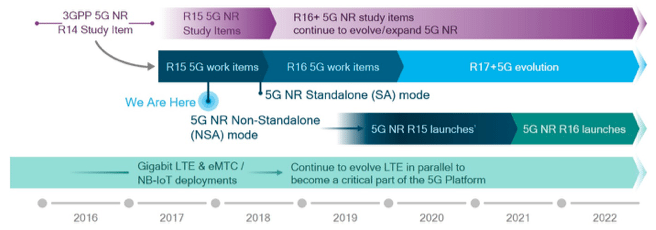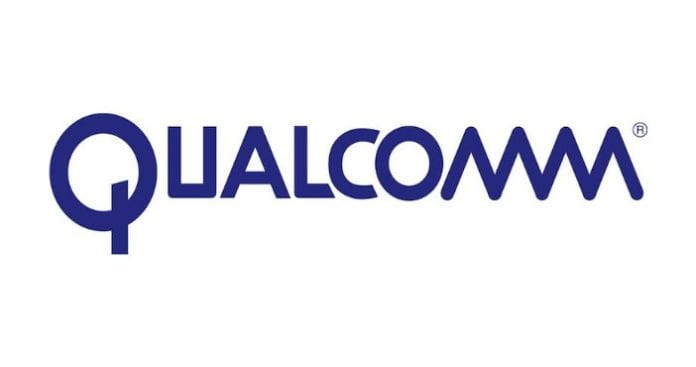 As the final days of 2017 draw closer, we achieved a very significant milestone this week in the path to making 5G a commercial reality. At the 3GPP RAN Plenary meeting in Lisbon, Portugal, which I’m actively participating in, 3GPP successfully completed the first implementable 5G NR specifications that define the first phase of the global 5G standard.
As the final days of 2017 draw closer, we achieved a very significant milestone this week in the path to making 5G a commercial reality. At the 3GPP RAN Plenary meeting in Lisbon, Portugal, which I’m actively participating in, 3GPP successfully completed the first implementable 5G NR specifications that define the first phase of the global 5G standard.
For those of us that have been involved from the beginning — performing early R&D, developing prototypes, and delivering fundamental contributions to 3GPP — we understand that this milestone is no baby-step on our journey to making 5G a reality. Granted, there is still a lot of work to do, but this achievement sets the stage for full-scale development of standard-compliant 5G NR networks and commercial devices for large-scale trials and commercial deployments starting in 2019. And that is something worth celebrating this holiday season!
Although Qualcomm began design on 5G technologies many years ago, the 3GPP 5G journey really kicked off back in September of 2015 at the RAN 5G Workshop in Phoenix, Arizona led by the RAN Chairman at that time, our very own Dino Flore. At the Workshop, over 500 companies, including Qualcomm, contributed 70+ presentations on visions for 5G requirements. And now, just over two years since that meeting, we have our first 3GPP global 5G standard.
Getting here was not always easy, and we definitely took some twists and turns – the usual business of building consensus in broad organizations dealing with technology (learn more about the way 3GPP work here). However, after 1,000s of meeting hours across the various 3GPP Technical Working Groups, we have delivered on the promise for an accelerated 5G NR schedule to support enhanced mobile broadband deployments starting 2019, as shown below in Figure 1.

Figure 1: Accelerating 5G NR – The Global 5G Standard
Earlier this year, in the 3GPP RAN Plenary meeting in March 2017, Qualcomm led a coalition of companies that committed to accelerate the 5G NR schedule. Why? To address the ever-increasing global demand for mobile broadband that will drive a 30x growth in mobile data traffic from 2014 to 2020 (source: Nokia Bell Labs Consulting Report, 2016). Add on top of this emerging, video-intensive use cases like the augmented reality and virtual reality, the proliferation of mobile broadband in vehicles, the always-connected PC, and much more, and you quickly get a sense for why 5G NR’s increased performance and efficiency was needed sooner than later. The insatiable consumer demand for faster, better mobile broadband was substantiated in a “5G Consumer Survey” we recently conducted.
The acceleration of the 5G NR introduced an intermediate milestone to complete technical specifications related to a configuration called Non-Standalone 5G NR in such a way to enable large-scale trials and deployments starting in 2019. It is these technical specifications that were completed this week at the 3GPP RAN Plenary meeting. But what do “Non-Standalone” and “Standalone” actually mean?
- Non-Standalone (NSA) 5G NR will utilize the existing LTE radio and core network as an anchor for mobility management and coverage while adding a new 5G carrier. This is the configuration that will be the target of early 2019 deployments (in 3GPP terminology, this is NSA 5G NR deployment scenario Option 3).
- Standalone (SA) 5G NR implies full user and control plane capability for 5G NR, utilizing the 5G next-generation core network architecture (5G NGC) also being done in 3GPP. SA 5G NR technical specifications are expected to be completed in June 2018 as part of 3GPP Release 15.
We also defined a framework to ensure commonality between these two variants. And because NSA and SA 5G NR will share common physical layer specifications for the air interface, these aspects of SA 5G NR were also completed as part of this December 2017 intermediate milestone.
And, speaking of these physical layer specifications, this first 5G NR standard introduces many advanced wireless technologies to meet 5G requirements for enhanced mobile broadband. At Qualcomm, we have been developing the building blocks of the 5G air interface for years — investing in early R&D to invent breakthrough wireless technologies that through our fundamental contributions to 3GPP, drove this first 5G NR standard. These essential 5G NR technology components include the scalable 5G NR scalable OFDM numerology, 5G NR advanced channel coding, the low-latency 5G NR self-contained slot structure, and support for 5G NR Massive MIMO and mobile mmWave. Many of these key aspects of the 5G NR physical design were finalized over the last few critical RAN1 Working Group meetings, chaired by our very own Wanshi Chen.
On a personal note, I’m very proud to be a part of these extraordinary efforts to drive the mobile industry forward and this huge step toward commercializing 5G. Qualcomm has been a leading contributor to 3GPP throughout its 18+ year history — not only in the number of technical contributions we have submitted, but more importantly in the quality of these contributions. Moreover, we have a rich history of building consensus in the industry towards impactful new directions for cellular technology, as well as the proven expertise in driving end-to-end designs through a complex 3GPP standardization process. These 3GPP leadership capabilities, which Qualcomm has consistently demonstrated the last 18+ years, are essential to allowing members of the ecosystem to confidently move forward at scale towards commercialization of these complex cellular technologies and systems, and will be essential to leading in the 5G era.
To read more about how Qualcomm is leading the world to making 5G NR a commercial reality in 2019 and learn about 5G NR technologies, download our 5G NR presentation.

